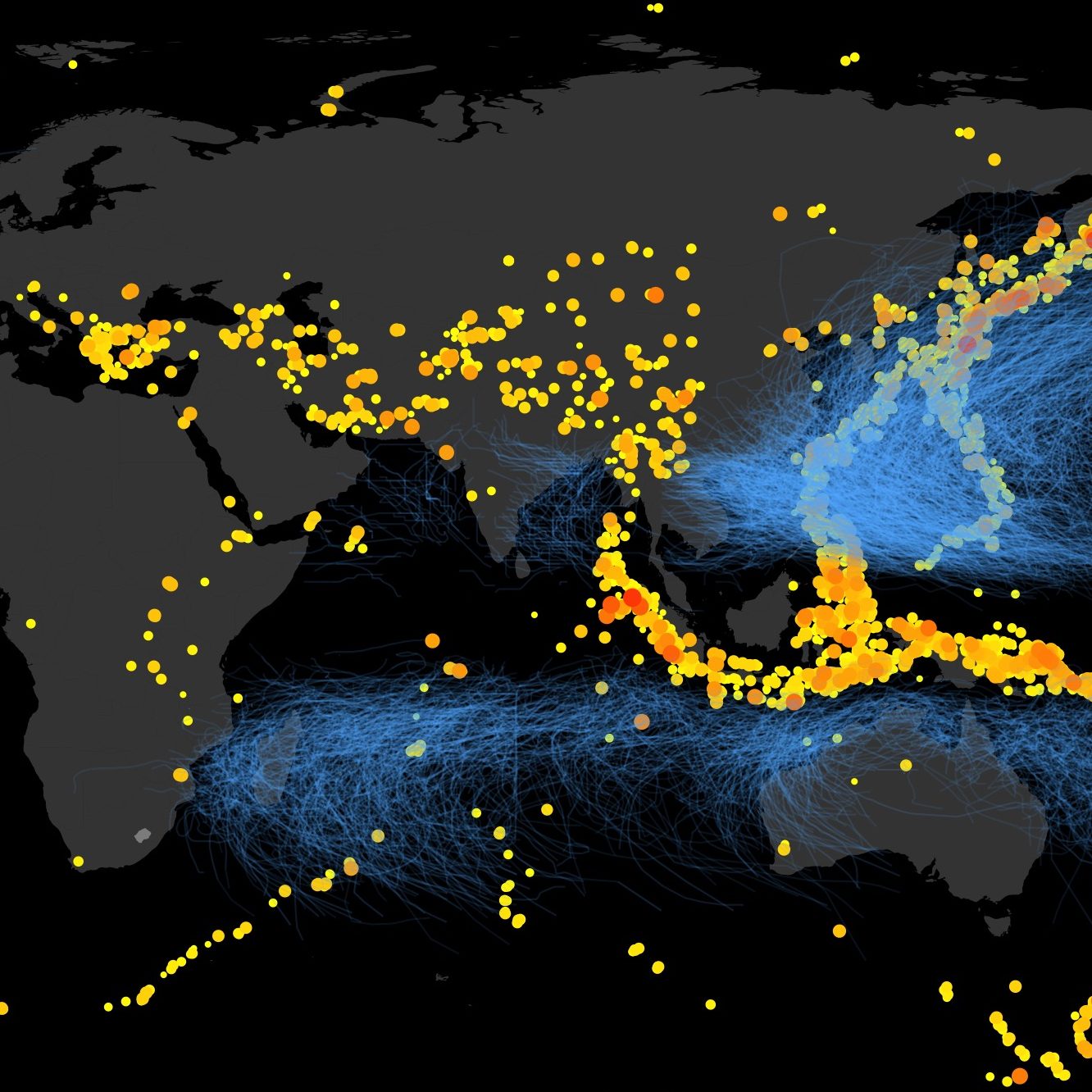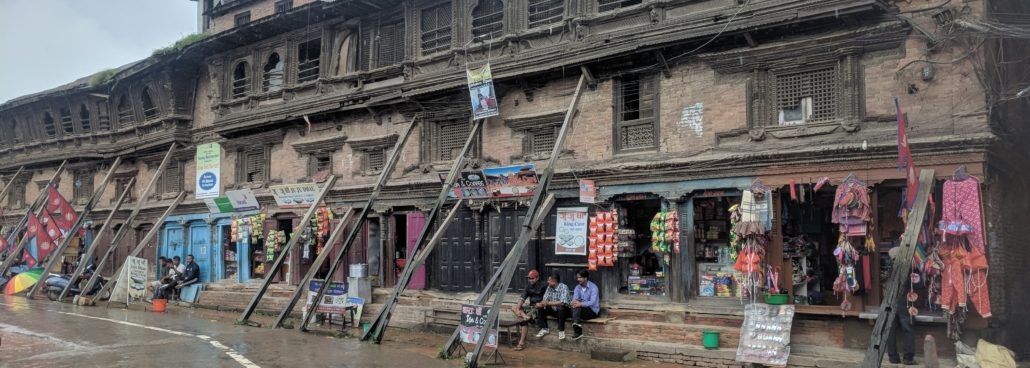By Sabine Loos
About a month ago, I was standing in front of a small conference room presenting to a group of Nepali civic tech enthusiasts about my professional journey to Kathmandu Living Labs (KLL). I received many thoughtful questions at the end of my presentation, but I’ve been reflecting on my answer to one specific question since I returned from my extended visit to Nepal. This question was posed by one of KLL’s interns, who has been deciding on which subject to study at university. He asked, “Why civil engineering?” Harmless enough, but we could extrapolate. Why are buildings and infrastructure important? I said something along the lines of: well, in my opinion, buildings and infrastructure systems make up the basis of civilization. After a disaster, having these basic needs covered, like safe shelter, frees up our minds to focus more on our next level of pursuits.
Thinking back to this moment, I’m not entirely satisfied with this answer. The obvious reason being that basic, physiological needs are comprised of much more than just safe shelter. At the same time, I didn’t acknowledge the incredible importance of the information required to advance decisions that fulfill these basic societal needs and support further development.
To make this more tangible, let’s take the example of the aftermath of the 2015 Nepal earthquake. From an engineering point of view, I could look at the extensive building damage that happened after the 2015 earthquake and say to myself – we need to design and build back better and safer buildings so this doesn’t happen again. Sure, but how does everyone with a damaged home get the money to build back better? And what if they didn’t have sufficient means to build safely, to begin with? Is ‘building back’ even important to those who were most affected? Often, these decisions are in the hands of national governments along with international and local NGOs, especially in developing countries like Nepal. But how do these groups create plans and policies on how to recover? Hopefully, based mostly on relevant information they obtain.
Because communities rely on information after a disaster, we have brought together a team of civil engineers, disaster risk and recovery specialists, social scientists, and civic technologists to develop “Informatics for Equitable Recovery.” We’re re-evaluating how post-disaster impact information is collected and analyzed using the 2015 Nepal earthquake as an initial case study.
Why Informatics for Equitable Recovery?
Before getting into our goals of the project, we first need to understand where impact information played a role in shaping long-term recovery after the earthquake in Nepal. While we’re always learning about this process, generally, we know key points after a disaster when regional impact assessments are needed for recovery-oriented decisions.
One instance is the Post-Disaster Needs Assessment (PDNA), which is a multi-sectoral loss assessment meant to detail a holistic view of the damages and needs introduced and/or exacerbated by the disaster. Nepal’s National Planning Committee (NPC) mobilized all major donors for their own PDNA two days after the second major earthquake on May 12 and went on to coordinate the assessment for the following two months.
On July 15, the Government of Nepal presented the numbers from the PDNA at the donor’s conference, the International Conference on Nepal’s Reconstruction, and received pledges for about $4.4 billion in aid for Nepal’s reconstruction. This later led to Nepal’s National Reconstruction Authority, Post Disaster Recovery Framework, and finally their housing reconstruction program. The PDNA is just one example of a seminal process which occurs after many major disasters, not just Nepal’s, that is crucial for a country’s capacity to recover.
Because impact assessments like the PDNA are so important for guiding recovery, the next generation of researchers and practitioners must answer:
- whether the statistics and measurements of impact truly reflect the needs of the communities who are affected by the earthquake
- whether the supporting analysis makes efficient use of existing information and rapidly available data collected after the event
Looking into these two areas, we’ve noticed the following shortcomings
- Current statistics of impact focus on damages to physical infrastructure, while social and demographic characteristics are left more as general statements. Focusing on damage tends to emphasize impact for communities with the greatest losses (and thus highest valued assets), rather than those with the greatest needs. Nepal’s housing reconstruction program did handle compensation for building damage equally by providing the same amount of reconstruction financing to affected homeowners, regardless of income or building value.
- Given the short time-frame, post-disaster data collection and analysis is generally ad-hoc, largely dependent on what data is available afterward. Ad-hoc collection leads to many new information sources (including crowdsourced or remote-sensing based data) being left unused, especially because they have unknown accuracy. In the case of the Nepal PDNA, the final damage figures were based only on information from local officials and police of each affected district.
Our approach
We are approaching impact informatics from multiple angles. Ultimately, we want to know what household and community factors are related to speeds of long-term recovery —examining both pre-existing characteristics and impacts identifiable shortly after the earthquake. Examples could include a household’s economic well-being, social standing, amount of physical damage, or level of accessibility.
Our team’s broad range of expertise allows us to assess the characteristics of regional impact from both the physical and social dimensions. Because detailed building damage data already exists, I am developing a spatial analysis technique to integrate multiple forms of existing data into a regional estimate of physical impact. Our social scientist from ETH Zurich, Jamie McCaughey, is in Nepal now working with our field research leads, Nama Budhathoki and Ritika Singh at KLL, to conduct exploratory interviews with community members in Nepal about their recovery (or lack thereof) since the earthquake. This will feed into a larger survey to determine which factors relate most with quicker recovery (and therefore greater resilience). Once we collect this new data, we can then look at how the two sides of the impact analyses will merge.

Houses showing the stages of reconstruction, taken from recent field interviews Panchkhal Municipality, Kavrepalenchowk District by Jamie McCaughey
Why I’m ready to be a part of this project
I’m excited to work on this project for many reasons.
Mainly, working across disciplines is beneficial when tackling complex and multifaceted issues, like equitable recovery. This isn’t a unidimensional idea; greater equity isn’t addressed by solely providing any one resource, whether it be housing, livelihood support, or mental health services. Information that addresses recovery issues in an equitable manner should address the multiple dimensions of impact, the physical, economic, and social — not silo them.

Members of our team after our first workshop at Nanyang Technological University. Pictured from left to right: Jamie McCaughey, Maricar Rabonza, me (Sabine Loos), David Lallemant, Nama Budhathoki, and Ritika Singh.
I’m also a strong believer that issues that arise between cross-disciplinary teams are not necessarily because they’re cross-disciplinary. I’ve been lucky enough to work on this project with a group that is passionate, committed, and willing to explore new areas outside their expertise. It’s been a truly enjoyable experience learning from the members of our team, especially everyone at KLL. (I could write a whole blog post about them, and just might).
But really, I’m excited about this project because we’re trying to answer a more cognisant question – what impact information is necessary for addressing equitable recovery? If it’s damage to buildings, we can continue looking at impact the way we currently do. However, I think the results from our project will empirically confirm that there are many additional and more holistic factors which influence the speed of recovery. Understanding such factors could be immensely useful in shaping how information is collected and analyzed after future disasters. And most importantly, continue to guide the ongoing recovery efforts in Nepal.
Given all this, we’re quite aware that we are far from addressing all issues related to disaster recovery. Our methods will address a specific purpose: providing information to guide national and regional-level actions. It is not our hope to devalue localized information and knowledge, such as stories or experiences. But given that our purpose is to support large-scale recovery decisions, we want to create information that is effective and actionable.
So back to that original question. I still think reliable infrastructure fulfills some of our basic needs — civil engineering is crucial for developing designs for building safe and affordable homes after a disaster. But in reality, I now see that both information and subsequent decisions drive where not only civil engineering designs go, but many other recovery services, leading to real, lasting, and equitable development.
This project is supported by the the Earth Observatory of Singapore as well as the World Bank’s Trust Fund for Statistical Capacity Building (TFSCB) with financing from the United Kingdom’s Department for International Development (DFID), the Government of Korea, and the Department of Foreign Affairs and Trade of Ireland.
The project is led by Dr. David Lallemant at Earth Observatory of Singapore, Nanyang Technological University. #data4sdgs



Leave a Reply